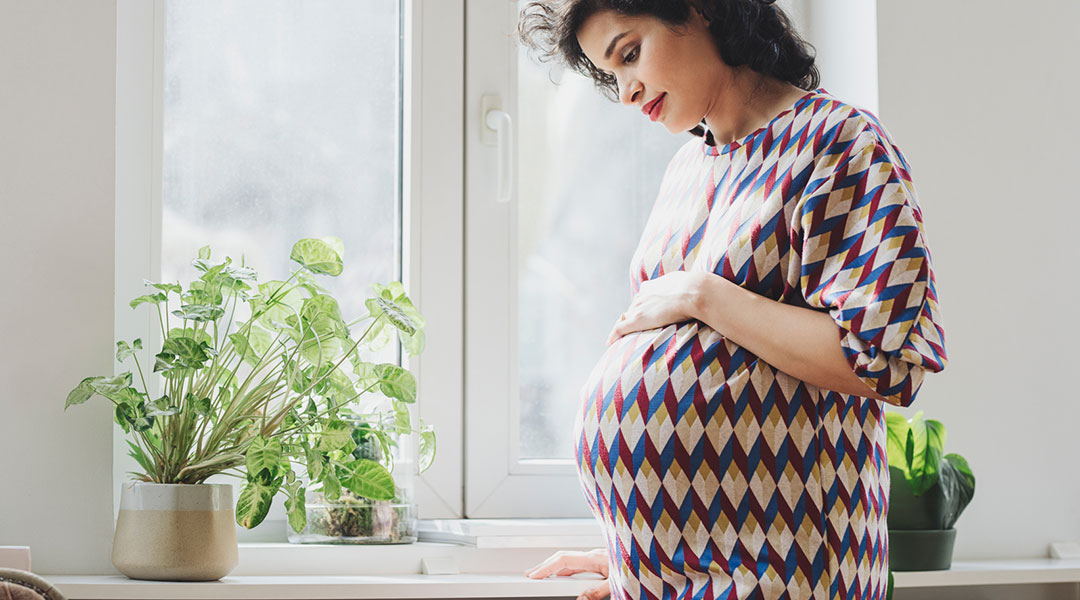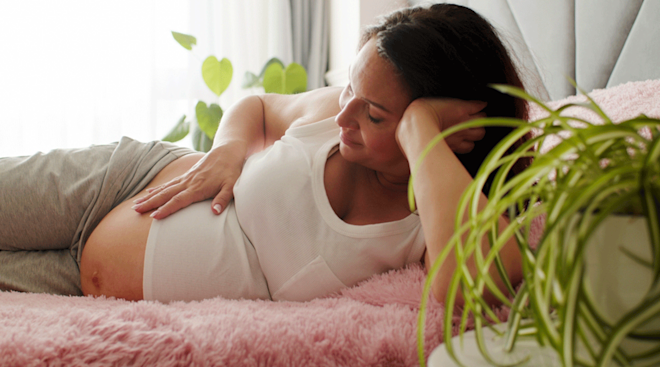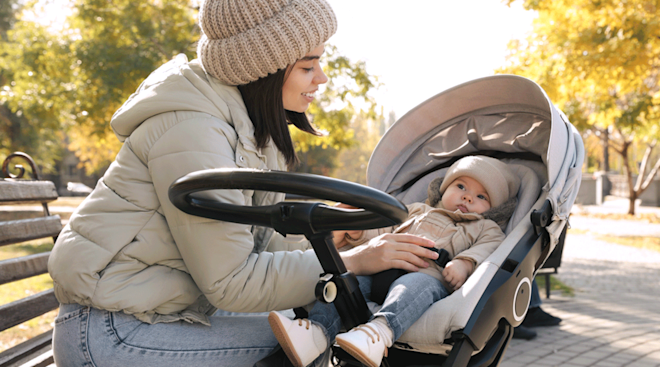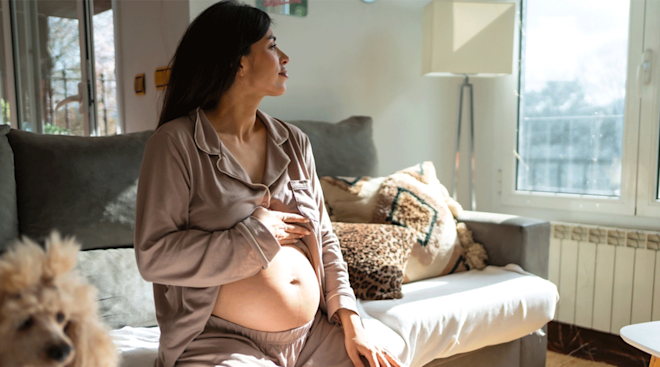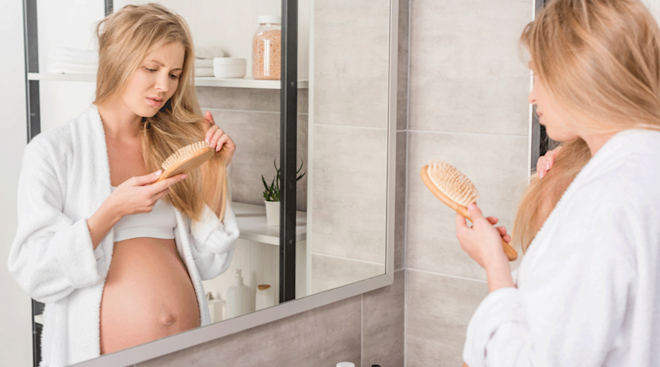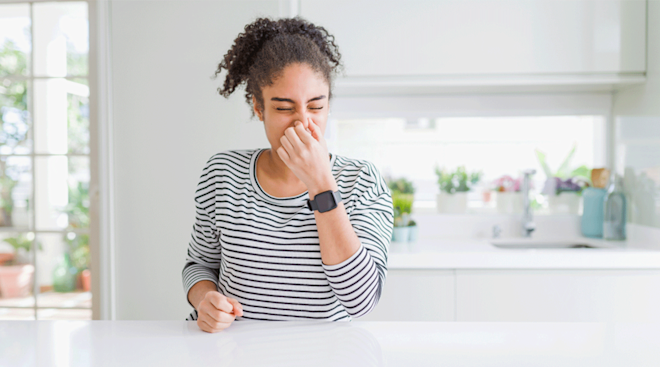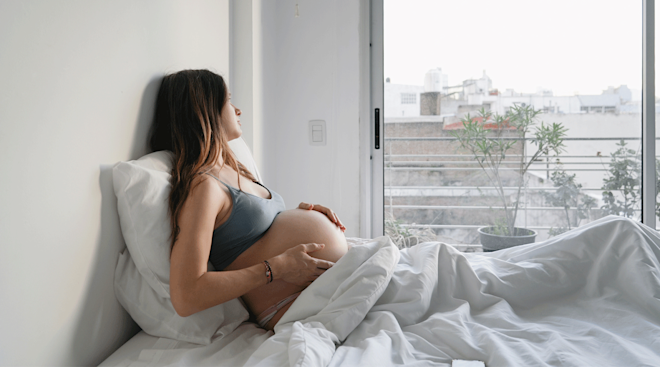How to Treat (and Prevent) a Yeast Infection During Pregnancy
When you imagined yourself with a baby in your belly, you might have pictured yourself sporting an adorable bump, glowing skin or thicker hair—not fighting back the urge to scratch your nether regions in public. Unfortunately, pregnancy and yeast infections can go hand in hand. The better news? Yeast infections for pregnant women are usually more of a nuisance than a concern. For starters, they typically won’t harm baby—and it’s completely safe to treat symptoms to ease your discomfort. Ready to stop the itch and get back to enjoying your pregnancy? Here’s what to know about having (and quelling!) a yeast infection while pregnant.
A yeast infection, also called candidiasis, occurs as a result of an overgrowth of candida, which is a fungal organism found inside the body, including the vagina. “Rarely do they pop up all of a sudden—usually this is something that gradually gets worse over time, and is more of a nuisance than a major condition or an emergency,” says Michael Tahery, MD, an ob-gyn and urogynecologist in private practice in Los Angeles.
Are yeast infections common during pregnancy?
The American Pregnancy Association notes yeast infections are more common during pregnancy—particularly during the second trimester—than during any other time in a woman’s life. Plus, for the general population, the Centers for Disease Control and Prevention (CDC) reports 1.4 million outpatient visits for yeast infections. According to the Journal of the American Medical Association (JAMA), an estimated 10 percent of pregnant people have a yeast infection at some point.
“In general, vaginal yeast infections are common—three out of four people experience a vaginal yeast infection in their life,” says Delaney. Of course, while plenty of people experience a yeast infection during pregnancy, that doesn’t mean a yeast infection is an early sign of pregnancy.
A little trip back to elementary-school science class can help explain why you may be suffering from yeast infections while pregnant. Remember the concept of pH? When it comes to your vagina, somewhat acidic is better. “We want the acidic environment, because it helps prevent yeast infections and bacterial overgrowth,” says Tahery. But when you’re pregnant, increased estrogen levels can throw things off, causing pH levels to fluctuate. “There’s also more sugar in the vagina, which can lead to an overgrowth of yeast,” adds Cara Delaney, MD, MPH, an ob-gyn at Boston Medical Center.
According to the American Pregnancy Association, some other causes of yeast infections while pregnant include:
- Taking antibiotics
- High blood sugar (i.e. diabetes)
- Vaginal sex and/or semen (more on this below)
- Douching (not recommended during pregnancy)
When it comes to experiencing yeast infections while pregnant, there are usually some telltale signs. The most common yeast infection symptoms during pregnancy (and any other time) include:
If you’re experiencing symptoms, it’s important to see your provider in person to confirm that you have a true yeast infection, rather than attempt to self-diagnose or choose medication on your own. “It’s crucial that people come in and get evaluated, because sometimes patients assume they have a yeast infection, but it’s actually a bacterial infection, which also causes discharge and discomfort, or the two can run together,” says Kameelah Phillips, MD, an ob-gyn in New York City. For a bacterial infection, your doctor would prescribe some kind of oral or topical antibiotic.
A bacterial infection (also known as bacterial vaginosis, or BV) during pregnancy is not something you want hanging around. “It can put you at risk for preterm labor and other complications like premature rupture of membranes,” Phillips says. Tahery adds that sometimes when a patient suspects a yeast infection, there might be other issues at play even beyond BV. “You might have a urinary tract infection, irritation from a new detergent or, in rarer cases, a sexually transmitted disease. Yeast-infection medication isn’t going to solve any of those things,” he says.
Of course it’s true that some people may have a yeast infection and experience no symptoms, only discover it through happenstance. “Because we culture pregnant people at 35 weeks for things like strep B infection, I might find a yeast infection as well,” says Phillips.
Although it’s never fun to hear the word “infection” when you’re pregnant, the good news is that a yeast infection during pregnancy is not likely to harm you or your growing baby. That said, an untreated yeast infection may spread to baby’s mouth or diaper area (this is known as thrush) during labor and delivery. “It’s possible to pass the yeast to baby, which is usually a mild and treatable infection,” says Delaney, adding “babies often get thrush anyway, whether or not their mothers have had a vaginal yeast infection.”
For a yeast infection in pregnancy, treatment is generally an over-the-counter vaginal cream or suppositories. These might include Clotrimazole (Mycelex, Lotrimin AF); Miconazole (Monistat 3) or Terconazole. Oral medications such as fluconazole (Diflucan) aren’t recommended for yeast infection treatment while pregnant.
If you have to wait a few days to see your doctor, Tahery says you can apply 1 percent hydrocortisone cream externally to help control itching. “If you’re desperate, you can use a small amount just on the lips of the vulva, which will offer some relief,” he says.
Wondering if you can use boric acid while pregnant? Tahery cautions against using boric acid suppositories to treat yeast infections during pregnancy. “Boric acid and other homeopathic treatments haven’t been tested in pregnancy,” he warns.
If you have a yeast infection that somehow goes undetected, it’ll likely clear up after you deliver. “These will usually self-resolve after pregnancy, unless you were having chronic yeast infections before you got pregnant, perhaps due to a condition such as diabetes,” says Tahery.
Sometimes having a yeast infection while pregnant can be the tip of the iceberg. If you’re having recurring yeast infections during pregnancy, it’s best to work with your doctor to figure out a plan. Along with medication, you may need to make lifestyle changes like wearing more breathable clothing or changing your underwear more frequently, since yeast thrives in wet, humid conditions.
There’s no guaranteed method of prevention, but whether you’re pregnant or not, here are some ways to decrease your chances of getting a yeast infection. “In general, you want to try to let the vaginal area breathe and minimize the amount of moisture down there,” says Phillips. Below, the APA and experts break down ways to prevent a yeast infection while pregnant:
- Edit your underwear drawer. Make sure to choose underwear and tights with cotton crotches, and avoid wearing thongs or anything that’s too tight. You should also remove underwear before going to bed.
- Change out of damp stuff pronto. Don’t wear wet swimsuits or gym clothes for longer than needed, and wash them each time you wear them.
- Make sure you’re dry down there: After you shower, make sure the outside of your genital area is dry before you start getting dressed.
- With bottoms, go for a flowy look. If you’re opting for pants, keep them loose-fitting and breathable.
- Stock up on probiotic foods. For example, eating yogurt containing live Lactobacillus acidophilus cultures may help keep your vaginal pH in check.
- Limit your sugar: You’re probably watching what you eat during pregnancy anyway, but take care to limit your sugar intake, especially since it can promote yeast overgrowth.
- Skip scented products. Don’t take baths with scented products and avoid douching, vaginal sprays and sanitary pads with fragrance.
- Get bathroom hygiene right. It bears repeating: Always wipe from front to back after using the restroom.
As annoying and uncomfortable as they are, take heart in knowing that yeast infections while pregnant are usually no big deal. You’ll want to get any symptoms checked out by your provider right away to ensure proper treatment, but know that soon the infection will pass and you and baby will be just fine.
Please note: The Bump and the materials and information it contains are not intended to, and do not constitute, medical or other health advice or diagnosis and should not be used as such. You should always consult with a qualified physician or health professional about your specific circumstances.
Plus, more from The Bump:
Cara Delaney, MD, MPH, is an ob-gyn at Boston Medical Center and a Family Planning Fellow at Boston University School of Medicine. She earned both her MD and MPH from Tulane University School of Medicine in New Orleans.
Kameelah Phillips, MD, is an ob-gyn in New York City and founder of Calla Women's Health, her private practice. She received her medical degree from the University of Southern California Keck School of Medicine in Los Angeles. She is also a member of the International Board of Lactation Consultants and is especially interested in the areas of prenatal care, lactation, sexual health and menopause.
Michael Tahery, MD, is an ob-gyn and urogynecologist in private practice in Los Angeles, as well as an assistant professor of obstetrics and gynecology at the UCLA Geffen School of Medicine. He obtained his medical license from the University of California, Irvine, and was previously chief of gynecology and director of the Center of Excellence in Women’s Continence & Pelvic Health at Cedars Sinai Medical Center in Los Angeles.
American Pregnancy Association, Yeast Infection During Pregnancy
Centers for Disease Control and Prevention, Vaginal Candidiasis, July 2022
Journal of the American Medical Association, Association Between Use of Oral Fluconazole During Pregnancy and Risk of Spontaneous Abortion and Stillbirth, January 2016
Mayo Clinic, Sex during vaginal infection: Is it harmful?, February 2022
Learn how we ensure the accuracy of our content through our editorial and medical review process.
Navigate forward to interact with the calendar and select a date. Press the question mark key to get the keyboard shortcuts for changing dates.
































